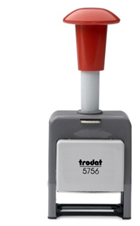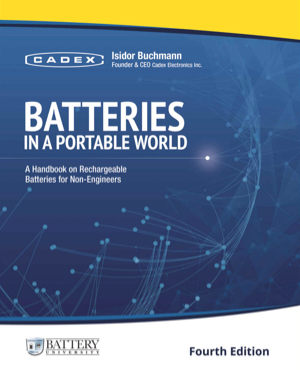Lead and cadmium-based batteries pose the largest environmental concerns, so much so that the nickel-cadmium battery was banned in Europe. Efforts are made to also replace the lead-based battery but no suitable replacement is available as was the case by substituting nickel-cadmium with nickel-metal-hydride. For the first time, lithium-ion is added to the list of pollutants. This chemistry was classified as only mildly toxic, but the sheer volume of Li-ion batteries in consumer products requires tighter scrutiny.
Rather than discarding batteries, ingenious entrepreneurs discovered a business model to give spent batteries a second life. It began with mobile phones where packs are replaced on the slightest complaint without prior testing. Installing a new battery may not resolve the perceived problem and the boxes under the counter fill with discarded batteries. Mobile phone providers learned that 90 percent of returned warranty batteries can easily be serviced and resold as B-class.
Refurbishment centers have sprung up in the USA, UK and Israel, purchasing surplus batteries by the ton and checking them with battery analyzers (Cadex) with a rapid-test function. Reports show that customers using the serviced B-Class batteries have identical performance records to new packs; there are no increases in returns. The Figure 1 shows a box of incoming mobile phone batteries to be serviced.
 | Figure 1: Discarded mobile phone batteries are tested and redistributed Modern rapid-test methods enable quick service of incoming batteries. Storefronts also utilize these technologies as part of customer service. |
While a faded battery on a mobile phone device may only cause a mild inconvenience, batteries play a pivotal role in medical devices. As the number of these instruments grows, so does the concern with the battery as it ages. The Association for the Advancement of Medical Instrumentation (AAMI) rated battery management as one of the top 10 challenges for hospital’s biomedical departments. An US FDA survey says that “up to 50% of issues in hospitals are related to the battery.”
A battery has a relatively short service life and must be treated like any other serviceable part in a device that often has a life span of 10 years and longer. When asking users, “At what capacity do you replace the battery?” there is a stare and rolling of eye but no clear answers are given. Without a strategic management plan, batteries are often changed too soon or too late.
| Spent medical batteries also offer an opportunity for refurbishment. In the absence of pro-active battery diagnostics, batteries are often replaced by date-stamping regardless of condition. Some packs are still in good health when the time expires. Device manufacturers support this program as it moves inventory; however, this model increases operational cost adds to needless time restrictions along the lines of expiring isotope in nuclear medicine. Batteries have improved and live longer; they also carry a higher price tag. This makes reliance on date-stamping alone ineffective and expensive. Here is why. Battery life is mostly governed by usage, less on time. Date-stamping fails to identify batteries that fade prematurely due to heavy usage. To compensate for early failures, device manufacturers mandate a more strenuous replacement policy and a two-year time span is now widely used. |  |
Nickel-based batteries offer about three-years of service; Li-ion five. Storage characteristics have also improved with modern lithium-based systems. Under-usage in many industries is common and this leads to discarding large pools of good batteries.
Date-stamping has not solved the battery problem but raises a new question. Discarding unchecked batteries escalate cost and harm the environment. Dr. Imre Gyuk, manager of the US Energy Storage Research Program at DOE, says that every year roughly one million usable lithium-ion batteries are sent in for recycling with most having a capacity of up to 80%.
More good batteries appear to become available for refurbishing. Although less than 100 percent in capacity, rugged industrial batteries have plenty of life left to serve less demanding applications. GM and ABB are already using Chevrolet Volt battery packs to store electrical energy for grid use. A medical technician working in a large Michigan hospital uses spent batteries from patient heart pumps to cut his grass with an electric lawn mower. This makes green energy even greener.
The leading health indicator of a battery is capacity; it determines how much energy a pack can hold. The measured capacity also suggests the price a refurbished battery can fetch. Eighty to one hundred percent is considered good; batteries for critical applications are often replaced when the capacity falls below 80 percent. This does not mean that the battery can no longer be deployed for less demanding applications but it should have a capacity of at least 50 to 60- percent to make refurbishing worthwhile. Below 50 percent the capacity may drop rapidly when in use and exhibit other problems.
The Capacity also plays an important role when matching cells and mono-blocks as part of assembling a new battery pack. The closer the match, the better the restored battery will perform and the longer the life will be. Packs designed for heavy loads and wide adverse temperature ranges are normally marched to +/– 2.5 percent. Such a tight tolerance may not be possible with refurbished cells and mono-blocks.
The capacity of Li-ion batteries cannot be increased when low as it is possible with nickel-based batteries. Some argue a small capacity gain when exercising Li-ion after a long storage, but gains are anecdotal. Li-ion has no memory effect that can be reversed.
Battery Test Methods
The ready light on the charger does not mean “able;” it only says that the battery is fully charged. Faded batteries charge quicker than good packs and are picked in error as being combat ready. The fuel gauge on a pack is not the answer either. It always shows 100% after each charge even if the capacity has dropped in half. A fuel gauge cannot estimate capacity.
Several battery rapid-test methods have emerged, but capacity estimation is difficult as no instrument can estimate the state-of-health of a battery in a single measurement. Similar to a doctor examining a patient, or the weatherman forecasting the weather, battery testing involves looking at multiple attributes to get a clear health assessment based on measurable symptoms. Reading the internal resistance of a battery no longer provides reliable indication of battery performance. The modern Li-ion has improved and keeps low resistance with cycling and aging. Figure 2 illustrates the typical relationship as a function of number of cycles. The capacity drops predictably with cycling and the internal resistance tends to stay low.
Figure 2: Relationship between capacity and resistance as part of cycling
The resistance of modern Lithium-ion remains low while the capacity gradually drops. Resistance measurements alone do not provide reliable results.
Cadex recommends battery analyzers to first establish if a battery is functional or not. Most Cadex analyzers feature the Custom program that can be configured to run a short test to examine voltage, internal resistance and if the battery can take a charge and deliver a discharge thereafter.
To test a unknown battery, the user enters the battery chemistry, voltage and Ah rating. The test begins with a brief discharge, followed by a short charge and a repeat discharge to verify the ability to hold a charge. Included in the test is also a battery resistance check that is repeated at the end of each cycle. The user can observe the battery behavior on the monitor during the test with the PC-BatteryShop™ software and abort the test if the battery does not react normally.
The battery is considered functional if the voltage stays within a defined window. Stepping outside the boundary denotes a fail. Typical test time is three minutes; a fail-condition would be known in seconds. The functional batteries should then undergo a full service before deploying the battery in service as the final capacity reading must always be known. A full cycle also calibrates “smart” batteries with fuel gauges. This method works for Li-ion, nickel-based as well as deep-cycle lead acid batteries.
Figure 3 illustrates the C7400ER, a programmable battery analyzer featuring the Custom program and servicing lead, nickel- and lithium-based batteries with ratings of up to 36V and 6A per channel to accommodate sizes of up to 24Ah. Each of the four stations operates independently. Redundant test algorithms assure safe service of batteries with a known fault.
 | Figure 3: Cadex C7400ER battery analyzer Programmable analyzers service batteries of up to 36V. Automated programs recognize a faulty battery and halt the service if necessary. The optional PC-BatteryShop™ enables PC interface. |
Connecting batteries has always been a challenge and Cadex solved this with battery adapters. Frequently used batteries are best serviced with a custom adapter. The Smart Cable is best suited for a broad range of larger batteries that sit outside the battery well, and the RigidArm is most convenient for mobile phone batteries. Spring-loaded arms meet the battery contacts from the top down, allowing quick and repetitive testing. The retractable floor holds the battery in a vertical position and a temperature sensor monitors the battery during the test.
Summary
Spent batteries are increasingly being refurbished and given a new lease of life, and for good reasons. Batteries have often much life left upon a retirement that has come too early.
Battery recycles are also becoming aware of the growing numbers of good batteries that are being discarded by rigid replacement policies, such as date-stamping. When it comes to healthcare, defense and other critical operations, few clerks will ask questions. They follow a dictated order without first testing the battery. The result is high operating cost and a strain on the environment.
The battery refurbishing market is expected to grow as more devices are fitted with batteries. One of the most promising industries is the electric car. Battery testing and reassembly is relatively simple but the key to success is identifying packs that still have good life left and then perform a complete test that includes capacity, self-discharge, internal resistance and voltage. Rapid-testing may work for mobile phone batteries but it is not recommended for larger packs. Only a full cycle will reveal full battery characteristics, which can be provided to the buyer as proof of performance.
About the Author
Isidor Buchmann is the founder and CEO of Cadex Electronics Inc. For three decades, Buchmann has studied the behavior of rechargeable batteries in practical, everyday applications, has written award-winning articles including the best-selling book “Batteries in a Portable World,” now in its third edition. Cadex specializes in the design and manufacturing of battery chargers, analyzers and monitoring devices. For more information on batteries, visit www.batteryuniversity.com; product information is on www.cadex.com.

